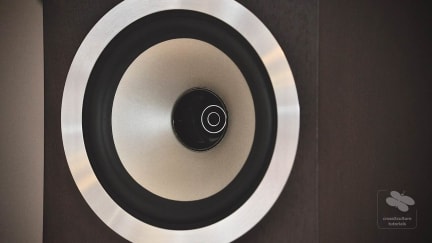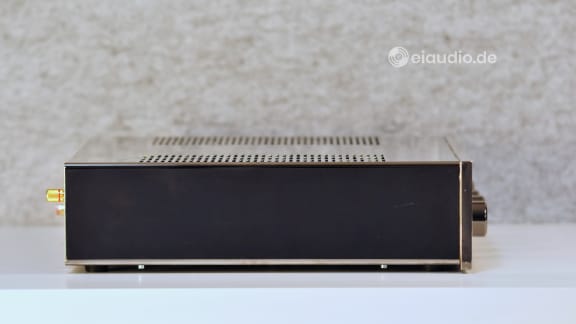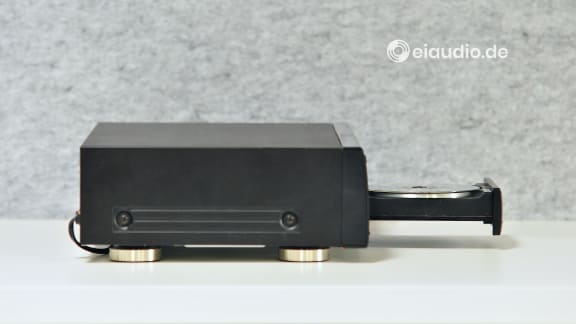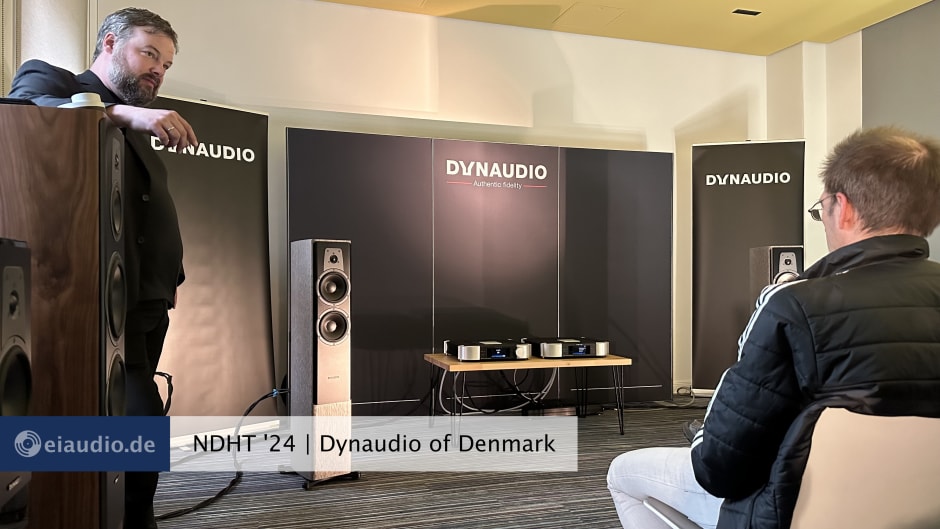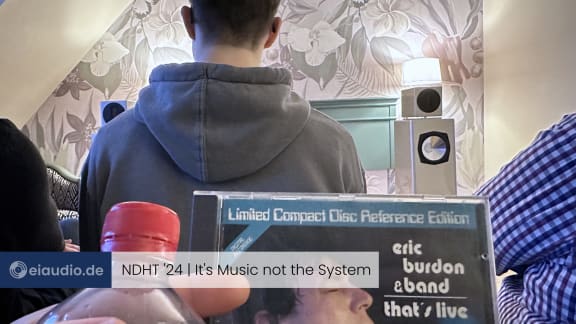Explorations in Audio
In 'Explorations in Audio' I aim to share some practical insights on setting up and optimising an affordable HiFi system. Although one would think that, really, all has been said about HiFi, some surprisingly simple questions still remain, e.g.: 'Is digital superior to analogue?' 'Do cables matter?' 'Can digital cables pick up interference?' 'Should speakers be placed on spikes?' 'Has evolution in HiFi made older gear obsolete?' 'Where should I place my sub?' 'Which room correction works best?' - On the other hand: 'Are these really the right questions?' - We shall see.
What's new in eiaudio?
While the entries in this blog are divided into the three distinct categories above, you will find a mixed listing of the most recent postings below. The most recent article is shown first. If this is not your first time visiting, the listing below is a good place to quickly check if anything is new.
Your input is more than welcome, as long as you follow the basic audiophile rule of ‘ear over mind’. This means that you do not comment based on what you think you know, but only on the basis of your own listening experience. Please feel free to suggest gear for testing as well as leave comments on the descriptions provided here.
Symphonic Line RG9 MK3

Watch this space. Full review of the RG9 MK3 coming up shortly.

Pioneer PD-S604
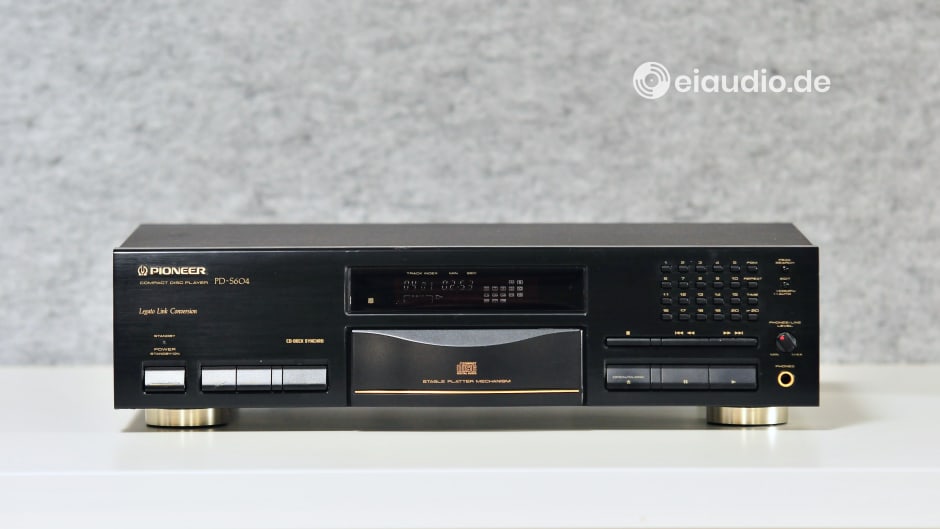
I came across our specimen of Pioneer’s 1995 budget CD player PD-S604 while looking for an affordable replacement for our trusted Sony CDP-502ES on which the original laser unit had begun to fail. Replacement lasers for the 30-year-old Sony had been out of production for some time, and the sources I was aware of had either sold their last stock or had since become ridiculously expensive. The Pioneer was by no means on the same technical level as the Sony, however, it did have a 10-year advantage as far as our understanding of laser technology is concerned, and, like the Sony, it was built at a time when decent HiFi still mattered. The PD-S604 ranked between the lower PD-S504 and the higher-specced PD-S904 in Pioneer’s price-conscious consumer range. As such, it was no match for the fully-specced PD-S06 that came out in 1997 and weighed around 10kg, however, at just over three kilograms, the PD-S604 already offered much of the same technology.
What attracted me to the Pioneer players of this time was their patented Stable Platter mechanism which firmly holds the CD in upside-down position on a revolving platter. In this constellation, the laser reads the disc from above, finding a nearly perfect focus plane each time. On most rival mechanisms, the CD will unavoidably wobble slightly, thereby requiring constant focus and error corrections from the mechanism itself and from the software. A further benefit of the laser positioned above the disc was the superior dust protection of the optical lens. Dust particles in the room are less likely to ‘settle’ under a suspended laser than they are on a laser that sits beneath the disk. Following the old HiFi principle of “garbage in, garbage out”, the output quality greatly depends on the integrity of the early signals in the chain. Having spent years of critical listening, I have become more aware of the audible effects on music shortly before a laser starts to skip. Thinning bass output and increased sharpness of the treble are the most obvious side effects.
There is a fine line between consciously detectable noise and the kind of subconscious noise that simply makes us think less favourably of a product without the reasons being quite clear to us. The PD-S604 promised to eliminate such noise on at least two levels: Via the Stable Platter drive mechanism described above and via an upsampling feature called Legato Link. The CD’s Red Book standard supports 2-channel stereo at 16 Bit & 44.1 kHz allowing for frequencies up to 20,000 Hz. While this is also considered to be the upper end of human hearing, the sound spectrum of natural music does not end there. Vinyl LPs allow turntables to naturally attenuate higher frequencies through the limiting physical properties of the needle, thus creating a smoother fade-out. CD players, however, cut off the upper spectrum by means of filters. This way of handling the high frequencies is said to give CDs a sharper and less tonally pleasant top-end. This circumstance is often quoted among the reasons for some audiophiles to prefer turntables.
Legato Link promised to process high frequency information in a more delicate manner by using spline interpolation to recalculate the missing original waveform. Pioneer’s Legato Link was among the first digital filters using spline interpolation to pass through superior transient information, however, this did not come without side-effects and could at times leave behind some unpleasant modulation at higher frequencies. It has sometimes been said that on well recorded CDs Legato Link did work its magic, but on some recordings, the algorithm seemed to be at a loss and added information that more resembled distortion than music material. I had to find out for myself how these claims would play out in real life and decided that the PD-S604 offered the best value for money of the range. Both the PD-S904 and the PD-S06 offered a digital cinch/RCA output which the PD-S604 did not have. However, since I wanted to listen to the player by itself without the use of an external DAC, I could live with its existing features.
The original owner of the PD-S604 reported that he had been more than happy with the player’s features and sound as well. He said that it sounded superior to all the players he had owned since and that his reason for selling had more to do with the family’s sleek new audio rack that offered room for a single combined CD/DVD unit only. Upon my arrival, I found the Pioneer perched on the dining room table with some old headphones attached for demonstration. The resulting sound was mediocre at best, and so I could only test if the player was basically functional and decided I would give it a more thorough inspection at home. When I left the house of the seller, I promised that I would make his player famous by presenting it on the eiaudio blog and invited him for a visit if he should ever be in Marne. When I arrived home that night, I gave our Sony CDP-502ES one final listen and then set up the Pioneer in its place. I would test my luck with having the Sony repaired once again, but I understood that this would take some months.
With its functional but not exactly audiophile power cord connected, the PD-S604 instantly went into standby. This was a welcome feature for me, because it meant that I could rouse it from its sleep via remote control. In fact, CD players were often the only audio devices in my setups to offer the luxury of remote operation at all. OK, to offer true luxury, the layout of the remote control (CU-PD045) might have been better arranged. The Power button, the Numeric Keys for the title selection, and the Play, Pause, and Stop buttons were all of equal size and integrated within a uniform grid of buttons. This made nighttime operation a real nightmare. And the controls on the front of the player were not without quirks, either. While Numeric Keys on the front of the player made it easy to begin playback from a given title, the placement of controls here was also quite counterintuitive. The Stop button, for instance, was placed in a different row than Play & Pause, which were positioned next to the button to Open/Close the tray. I wonder how many times this player has been opened by mistake in an effort to stop the CD from playing.
On some CD players using a single power supply for the digital and analog section (e.g. Denon DCD-1420) turning off the display will lead to a cleaner sound by removing some of the digital haze. However, turning off the LCD display on the PD-S604 simply turns on a red LCD display message saying that the CD display is currently turned off. Therefore, perhaps unsurprisingly, I was unable to detect an acoustic benefit in turning the display off. Perhaps another such quirk is that the motor-driven headphones volume attenuator also affects the variable line-out volume. In audiophile listening, we attempt to reduce the number of controls and attenuators in the signal path and mostly give preference to the fixed line output. However, users who prefer the variable option may well find it a nuisance to have the two features connected. The headphone amplifier itself is a bit weak and will only sound decent with low impedance headphones made for laptops or other portable devices. Audiophile 300 Ohms would quickly drive this headphone amplifier to its limits.
I connected the Pioneer to our upgraded Rotel preamplifier with Becker ST-200 MOSFET amplifier using HBS2 silver solid core wires. The Rotel-Becker combination is generally more musical than analytical, it sounds rather enjoyable and is tonally rich rather than bland sounding. When paired with our Epicure EPI 500 loudspeakers, the combo is ideal for relaxed nighttime cruises and a great companion for hours of effortless listening. I found the PD-S604 to blend in well here. The Becker amplifier provides a good sense of order with most music choices, and the Pioneer enhanced this impression adding even more depth to the soundstage. On many occasions, I felt that the music was positioned in a perfect round circle spanning from my ears to the speakers and beyond. I appreciated the fact that with the PD-S604 the music did not lose any of the intimacy that I was used to from this amplifier to speaker combo.
Reading the disc with great accuracy and refining the top-end with Legato Link proved to be beneficial to most recordings of natural instruments as they are found in Jazz, Blues, Singer-Songwriter, Classical Music, and other handmade materials. One some recordings, however, it seemed that the high-frequency algorithm had some difficulty discerning music content from distortion and served to amplify this noise in a manner that I had not heard from other players. These artefacts could span from pure pink noise distortion to genuine background occurrences that remained hidden on other players. On one instance, the music material repeatedly changed from muffled to transparent as if the player could not make up its mind how to best handle the high frequency roll off. On the other hand, I must confess that I have not yet heard a CD player on which all recordings sound equally well. Suffice it to say that on some recordings the treble could be more accurate and better integrated.
There is one small upgrade I could not stop myself from adding: While taking the photos for the website, I noticed how unusually light the player felt. With its disk platter ejected, one might worry that it might fall over. I therefore added a sheet of anti-resonant coating to the inside of the cabinet (see last photo). Doing so added some 500 grams to the unit and served to reduce drive vibrations on the chassis which in turn led to an even more ordered sound. I once saw this method applied from factory on the Denon DCD 1500 II and rather liked the idea as a quick fix to mechanic issues. CD-players greatly benefit from a firm stand and lots of body weight to quiet their moving parts. A small tweak with audible effect.
Adding the anti-resonant coating, I noticed another small issue with the player. On some recordings there seemed to be a slight lack of forward drive. The player could sound a bit slow on occasion, especially when the music got faster. It is well possible that this effect was further highlighted in combination with the Becker amp that would at times display a similar tendency. The impression never stayed for long, but it was noteworthy enough for me to mention it here. Fans of faster music might want to take this into consideration or at least test the player with their material to first see if it works for them. On the music that I listen to, the occasional loss of momentum never troubled me a bit.
In its current state, I am indeed very satisfied with my purchase and enjoy the warm and pleasant sound of the PD-S604. There is sufficient bass presence to make instruments sound real and well-rounded. The Pioneer’s superior sense of order and its generous spacing of instruments are attractive features for the recreation of natural instrument recordings. In my experience, the musical benefits of Legato Link far outweigh the few instances in which it does not work so well. All in all, the PD-S604 has grown on me more than our Sony ever had. The better the music material is recorded, the better this player can show what it can do.
What experiences have you encountered with this player? At the time of writing this, there was not much information on this Pioneer player to be found on the web. Click on the header picture to activate commenting and be sure to share your personal experience with us.
Specifications:
- Type: Stable Patter mechanism CD player
- Power requirements: AC 220 - 240 V, 50/60 Hz
- Digital converter: PD2029A
- CD Mechanism: PEA1179
- Frequency response: 2 Hz - 20,000 Hz
- Signal to noise ratio: > 108 dB
- Dynamic range: > 96 dB
- Total harmonic distortion: < 0.0028%
- Line output voltage (max.): 2 V
- Wow and flutter: < 0.001% (below measurable)
- Number of channels: 2-channel (stereo)
- Variable line output (stereo): 1x cinch/RCA
- Fixed line output (stereo): 1x cinch/RCA
- Digital output (stereo): 1x optical
- Accessory jack: CD-Deck synchro to tape
- Headphone jack: motor drive volume control
- Accessories: remote control unit
- Remote batteries: 2x AAA
- Power consumption: 15 Watts
- Operating temperature: +5 to + 35 C
- Dimensions: (W) 420mm, (D) 286mm, (H) 110mm
- Product weight: 3.9 kg
- Country of Manufacture: Japan
- Year(s): 1995 - 1996
31. Understanding Room Acoustics
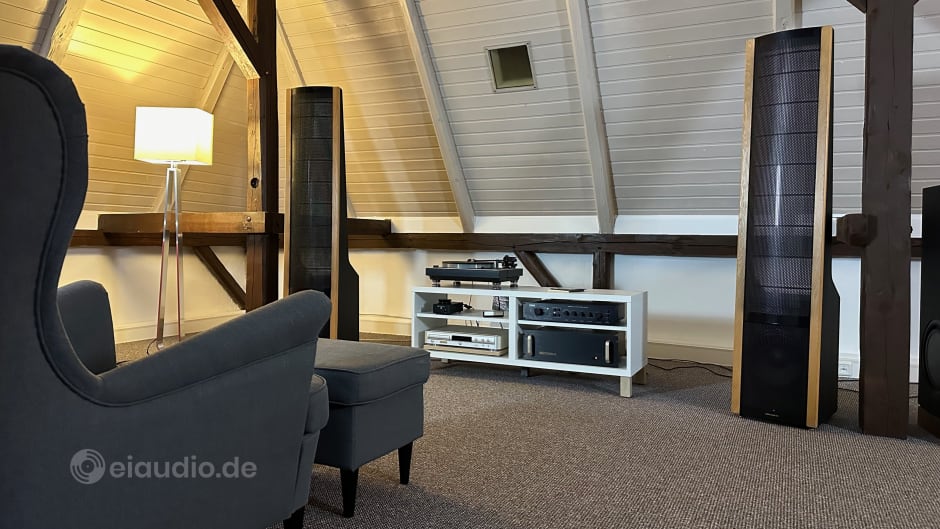
Often, even before we listen to a classical instrument, we can imagine how it sounds just from looking at it. This might seem like a bold statement, but think about it: A cello, for instance, is a large wooden instrument with long thick strings, whereas a saxophone is a brass instrument on which air is blown past a reed into a tube that culminates in a horn. Is it not true that we would imagine the cello to sound warm and wooden and the saxophone to sound cooler and more tinny? And would we not expect the larger cello to play low frequency tunes and the smaller and horned sax to play higher notes and very loud?
The sound of classical instruments is mostly determined by their size, shape, and inner dimensions, because these features serve to create rooms and chambers in which the instrument’s sound is shaped and amplified. The source of the sound (strings or reed) is mostly separate from the resonating chamber itself. In the case of the cello, its strings are made to vibrate and resonate over a well-conceived box behind. In the case of the saxophone, pressurised air passing over a reed sets it in motion, with the sound being augmented by valves and tubes and further amplified through the horn's mouth.
The exact match of the strings with the body of the cello, or of the reed with the size and design of the saxophone, finally determine how each instrument sounds. Great instruments get this balance just right, and no one would imagine that inserting a louder reed or getting more power to the strings would greatly improve the sound. And most of us would not think of changing the position of the reed or strings either. Instead, it is simply understood that the source of the sound and the corresponding chamber need to be perfectly matched for the instrument to deliver the optimal sound. In fact, it is the precise matching that gives each instrument its own distinct tonal colour and character.
When first entering the realm of High Fidelity we might be led to believe that larger loudspeakers or or more potent amplifiers will solve the issue of lacking musical presence or improve bass performance in a room. However, the instrument analogy shows that proper calculations and correct loudspeaker positioning within a room are just as important. More power, speed, and accuracy will in a first step serve to accentuate flaws in the setup, which is often the reason behind expensive High End systems sounding quite unbalanced in their owner's homes.
The more classical instruments we have heard and the more materials we have touched and played with, the better we become at predicting an instrument’s sound even before we actually listen to it. Experience, attention, and imagination play an important role when it comes to listening. Children, for instance, are often said to have superior ears, especially when it comes to detecting high frequency sounds. And that is probably true, however, the physical ear mechanics only play a very small role in respect to critical listening skills. This is how children are far more likely involved in traffic accidents than adults. Although they may hear a vehicle approaching, their cognitive skills are not yet fully developed, so that the bending of sound waves from the speed of movement and the increasing volume of an approaching vehicle will mean very little to them. The ability of the brain to filter and pay attention to specific sounds in order to derive meaning from them only evolves with listening experience.
In that same way, I must confess that room acoustics meant very little to me, until I first owned a room that I could personally build from scratch and thereby experience the steps of transformation first hand that were necessary to make it sound great. It was not until we moved to Marne, a small town at the North Sea coast of Germany, in summer 2023, that I had a dedicated listening room for experimentation. Located under the roof of the building, the wide open space was initially an attic with visible beams and bare insulation that was still dangling from the ceiling ready to fall off. I remember clapping my hands in this room and being thrilled by the fact that there was no echo to be heard. At that stage, I was standing in “silent” room, perfect for listening adventures.
Original Room Presentation Video
On the other hand, the attic was also dusty and still poorly insulated. Bugs and spiders had invaded every nook and cranny, and I could hear the wind blowing through small gaps under the shingles. This was no place to set up our Martin Logan electrostatic speakers. High voltage panels are dust magnets, and turntables to not benefit from dust and wind either. To turn this space into a studio for audio auditions would require some effort. We began work by insulating the floor and adding an extra layer of OSB (Oriented Strand Board). And we decided to preserve the original tongue and groove boards on the side walls and only added an extra layer of insulation to the ceiling, which we then covered with one layer of plaster board.
At this stage of development, clapping my hands in the room led to quite a different result: The OSB floor and the tongue and groove walls still gave off a warm and pleasant air, but they also reflected a lot of sound energy instead of absorbing it. The slightly domed ceiling gave the room an even more confined and boxy impression with an audible reverberation despite its generous height of three meters. The listening room was 7.80 x 9.20 meters in size, and so the first, second, and third order resonance frequencies were relatively low, starting at 18 Hz, however, there was plenty of time for the higher frequencies to bounce off the smooth ceiling and walls and reflect back to the listening position with obvious delay.
On the positive side, there were lots of open wooden beams to deflect some of the reverberation energy and three of the side walls were sloping from about 95cm height. The tongue and groove wood cladding also provided some natural deflection, especially of the higher frequencies. And the one straight wall in the room had a large recessed portion leading towards a narrow storage space in the back. On the negative side, the room was relatively square, which might serve to further accentuate specific room modes. And, most obviously, there still were no furnishings and fabrics in place to absorb some of the reverberation energy.
The most pressing first step, therefore, was to lay down a carpet that would cover the complete floor. Carpets are great at absorbing acoustic energy and can be used in combination with rugs to provide an even greater absorption effect. Once the carpet was in place, we brought in the first loudspeakers and set them up as described in the chapter on Room Mode Calculations. In keeping with our instrument analogy, it really does matter where the sound generator is positioned and what building materials are found in the room. After all, the listening spot is to be provided with a relatively linear sound over all frequencies that is similar to the experience of the sound engineer when listening to the recording via a decent pair of stereo headphones in the studio. For this to be the case, both the speakers and the listening position need to be in correct relation to each other and to the room.
Obviously, our journey of exploration is not finished here. The completed room with carpet still sounded far worse than the unfinished room that I originally fell in love with. Be sure to read the chapter on room mode calculations for loudspeaker positioning and the chapter on acoustic treatments to learn about some of the easy fixes to sound issues.
As always, let me know how you feel about this chapter of the journey. Reflecting on your own experiences, how have room acoustics affected your enjoyment or perception of sound? Share your stories in the comments below — I'm eager to hear about the unique soundscapes you've encountered!
< Room Mode Calculations | Acoustic Room Treatment >
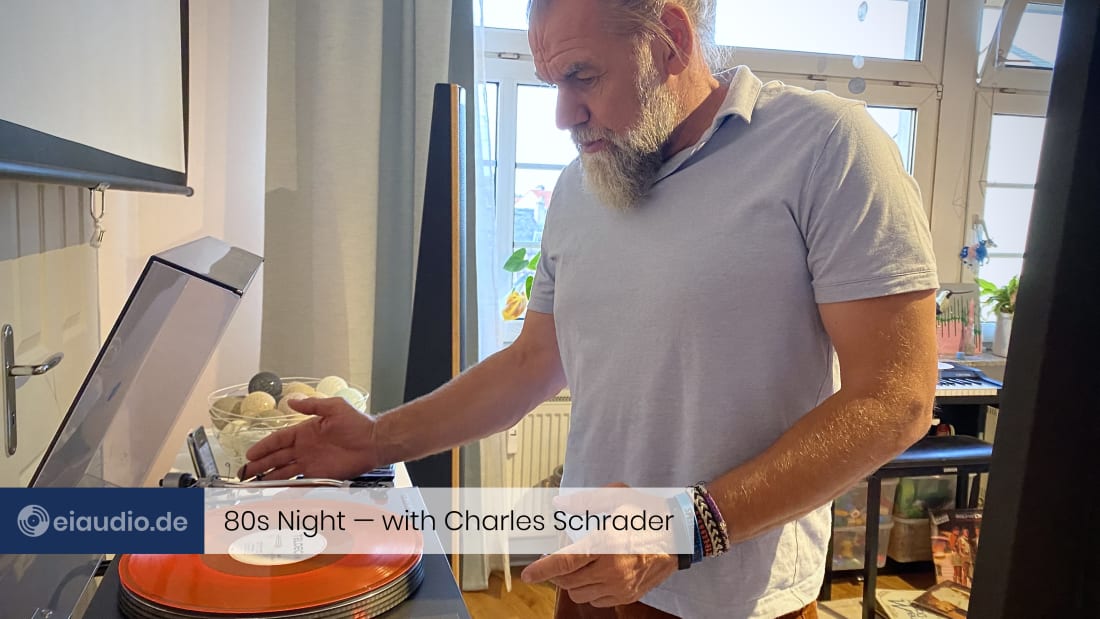
NDHT Norddeutsche HiFi-Tage 2024
06/02/2024
Author: Karsten Hein
Category: Explorations
Tag(s): Norddeutsche HiFi-Tage
The Norddeutsche HiFi-Tage 2024 (or NDHT) were hosted by the Steigenberger Hotel in Treudelberg on the outskirts of Hamburg. There were approximately 200 exhibitors listed for the event, many of whom were still unfamiliar to me. Having begun my Explorations in Audio based mostly on vintage gear, I felt it was high time to make some new discoveries and broaden my horizon by including contemporary brands.
In preparation for the fair, I ran some web searches and took notes on each exhibitor. I packed a suitcase that contained eiaudio.de business cards, printouts of the visitors statistics to the eiaudio weblog (which had recently risen to over 12,500 visits per month), two Boogie Woogie CDs by Jörg Hegemann, my trusted Macbook, and some nose spray. The latter was just in case the combination of dry air and loud music would prove to have adverse effects on my already strained vocal cords.
Although I arrived only a few minutes after the official opening of the fair at 10:00 AM, the Steigenberger hotel parking lot was already fully occupied. I had to circle around the block and was lucky to secure a semi-legal slot adjacent to a longer line of parking lots where I was not in anyone’s way. Just in case, I walked up to the house on which I touched the driveway with two tires and left my mobile number with the young gentleman who opened the door.
I would have preferred the parking situation to be organized better. There were clearly large open spaces on the hotel premises that had not (or not yet) been made available to visitors. Being waved on by helpless parking attendants did not make for a positive first impression and was also a contradiction to hotel’s website information for drivers which stated quite clearly that there was sufficient parking available on site.
I ended up walking towards the hotel with droves of visitors that were exchanging stories about where they had managed to secure a spot for their vehicles. Some suggested that the traffic police had been quite unforgiving in the years before, on occasion charging parking offenders not only with a hefty fine but also with the cost of repairing the stretch of damaged lawn under the respective vehicle’s tires. I could well imagine that such proceedings had led to lasting memories for some of the guests.
I was a bit nervous about the event, too. Ever since we had our children, some ten years earlier, we tended to spend much of our free time among ourselves, and us going out to visit events had become the exception rather than the rule. This gradual weaning off sometimes became obvious when confronted with small things, such as the price for leaving my coat at the wardrobe having doubled in the meantime. You might therefore imagine my utter disbelief when I was first confronted with the recommended retail prices of modern HiFi gear — not just at the higher end of the market. It seemed to me that sporting five digit figures for a minimal home setup had meanwhile become quite usual.
I began my walk around the show at the Dynaudio booth and was pleasantly surprised by the setup I found. The renowned Danish loudspeaker manufacturer shared its booth with Canadian HiFi gear maker SIMAudio, and the presentation was clean and sophisticated throughout. Étienne of SIMAudio France explained to me that this impression might be due to the two companies manufacturing all their components from scratch. By doing so, they could combine technical functionality and visual design in a meaningful way, a philosophy that included the product the presentation.
Étienne directed me to a listening demonstration in which a pair of Contour 30i were positioned with plenty of space to the front and side walls and driven by SIMAudio gear. The room was of appropriate size for the speakers, and in combination made for a well-refined experience. The classical music tracks revealed a wonderful harmonically rich midrange and only on occasion gave away the position or moderate size of the speakers. Tonal memory is an elusive beast, but here I was listening to the same reassuring sound that I remembered from many earlier experiences with the brand. I gave Étienne my card, thanked him for the experience and went on my way.
The next room down the hall displayed a Musical Fidelity system that was hooked up to floor standing speakers by what looked like the French manufacturer Triangle, although I could not find the exact model on Triangle’s website. During the brief introduction that followed, we were informed about Musical Fidelity’s special approach to amplification, which consisted of two amplifiers working together to fully execute the positive and the negative curve of a music signal rather than killing the back signal through a high damping factor. According to the presenter, this made for a less constrained and more life-like listening experience.
Looking around the room, my eyes rested on the A1 integrated amplifier. I ran my hand across its heatsink top and was instantly reminded of how hot these units get. What an impressive little machine this was. Sadly, the music demonstration that followed did not support the theory presented on this occasion. Instead of a life-like presentation, the Triangles sounded boomy and imprecise. Seeing that the speakers were mounted on (metal?) slabs that had been placed on top of a long floor carpet, I suspected that this setup was the culprit. All the bass driver energy was possibly causing the speakers to wobble.
As there were sets of Magnepan speakers on the right hand side of the room, I would have much preferred to give the Maggies a listen, especially because I have not yet had a set on this blog. It was well possible that the magnetostats would have worked better on the wobbly slabs than dynamic drivers. However, as there was no indication that a change of speakers would soon take place, I decided to make my way to the next booth. Fun fact: Musical Fidelity changed owners in 2018 when its original founder Michaelson sold the company to Lichtenegger (of ProJect, amongst others).
Walking past reception, I saw a lineup of German Transrotor turntables on display. I must confess that I have always been a silent fan of their massive designs. Touching the drive belt, I was shocked that it felt as fragile as an ordinary household rubber band. I was pleased to see that the unconventional shape of the Transrotor turntables also managed to turn heads among the few female visitors present. In HiFi this usually says something, and I was once again reminded of my wife’s flattering reception of the DQ10.
The next room introduced me to a setup by Audio Reference, a German distributer for a handful of selected HiFi brands. I must say that, despite my prior research, it proved to be difficult to understand who was responsible for displaying what at each booth. And there was little space or time to talk to professionals, because everyone seemed quite busy. The speakers on this day were made by Perlisten Audio from Wisconsin, and we were either listening to a D’Agostino integrated amplifier that was run via a StromTank battery supply or a D’Agostino preamp with Krell power amplifier underneath. Either way, there was a slight edginess to the treble coming from this ensemble that I did not much care for.
In addition, Audio Reference had set their system(s) up diagonally to the room, which is a valid option to mediate modes in a difficult room. However, the measure also took some of the natural agility and attack out of the bass frequencies. Looking at their website, I could see that they had such a host of well-made equipment to choose from that it must have been difficult for them to narrow the selection down to a single setup for this show. I would have been interested in addressing the treble phenomenon and learning more about the company philosophy, but with the music playing and everyone looking busy, I thought I might as well Google it. While the fair might help to increase brand awareness by confronting the visitors with products they have not yet seen or heard of, the relatively loud environment did not make it ideal for serious conversation on the subject.
Instead of moving on to the upper echelons of the High End market with brands such as Ansuz, Axxess, and Borresen that will easily sell for six digits and more, I decided to get back down to earth with some German HiFi royalty. Rolf Gemein had been designing HiFi gear since the 1970s and made a name for himself by creating systems that made real music sound real for real people. His branded Symphonic Line products had won many national and international awards over the years.
In room 326, located on the third floor and all the way at the end of the hall, I was warmly greeted by Heinz-Peter Völkel the founder of "analog-treff" Nürnberg, a contributor to the Rundfunkmuseum, owner of a record label, and a distributer for Symphonic Line. We had been put in contact by a mutual friend and already spoken on the telephone a few days before the fair. It was good to meet in person. H.P. took my card and passed it on to Rolf, and this is how we met. I sat down among the other guests to listen. The music was well-chosen, hand-made stuff recorded live at intimate venues with acoustic instruments and vocals. And yet it was not your usual High End system esoteric Vocal Jazz, but rather the true to life recordings of the 60s and 70s.
Having spent much time setting up and fine-tuning systems over these past years, in getting rid of noise sources, optimizing ground potentials, moving to symmetric power cords, etc., I was pleased to identify that the same principles had been applied to the Symphonic line setup. The loudspeakers featured 20cm baked Görlich chassis and an air-motion transformer that was custom made by Mundorf and housed in a separate and mechanically insulated box. The speakers were driven by Symphonic Line’s RG10 MK5 integrated amplifier in conjunction with the brand’s newly developed power chord. There was a superior sense of order in the music and the dimensions of music events seemed both spatially and dynamically just right for the material presented.
In fact, I was often surprised by the dynamics presented. This is one aspect in which I found the Symphonic Line system to exceed my expectations. Moments of attack came so startlingly realistic that I found myself grinning from time to time. The occasions on which the speakers showed their limitations were exceptionally few, at least from a centered position. While standing to the right or left of the room, I sometimes had the impression that there was some compression of the mid-frequencies that I had also noticed on the Dynaudio setup. This was probably caused by the speakers interacting with the room.
My next stop was with AVM. The German manufacturer presented a lineup of high-gloss silver-fronted HiFi gear and partnered with British PMC to supply the loudspeakers. The setup looked clean and elegant, however, I could not say the same for the acoustics. My trouble is that I cannot say anything positive about a system when the tonal integrity is lost. The treble sounded piercing, metallic, and overly analytical. In this state, the setup would always draw attention to itself rather than the music. Looking behind the rack, I saw that signal cables were crossing power cables etc. It was difficult to say how the components would have sounded had they been set up properly, but having just come from Symphonic Line, where the owner and developer himself had arranged the setup, the contrast could not have been starker.
The French streaming amplifier manufacturer b.audio partnered with Intrada, a speakers manufacturer from California to present their gear. Intrada uses bandpass technology to extend lower bass and the resulting sound was — different. As I had not heard of either of the two brands before, I first had to make some sense of what was causing what in this particular signal chain and sought the assistance of a sales representative. I was informed that all tone controls were off and that the onboard DSP of the b.audio unit was inactive and had not been calibrated to the room. With his information, I listened for a few minutes and came to the conclusion that bass came across like a separate music event on this system. The two integrated band passes of the Intrada speakers proceeded to send shockwaves of sub bass through the room from time to time, something that would surely appeal to bass lovers.
Eternal Arts by Dr. Burkhardt Schwäbe had a combination of tube amplifiers and tape machines on display on which the company presented studio master recordings. The speakers were dipoles of Eternal Arts’ own product line. And although I very much enjoyed the approach and speaking to Mr. Schwäbe himself, I was not overly pleased with the resulting sound of this particular setup. The top end was a bit muffled, and spatial presentation suffered as a consequence. As I have read some positive reviews of the gear itself, I suspect that the source and amplification were of high quality. I am personally not so sure about the benefit of the metal grilles in front of the speakers, although I understand that these particular speakers were designed in cooperation with Ecouton and that there is surely a good reason for everything.
Graham Audio offered a solid performance. During the second half of the day, there was a tendency among exhibitors to turn up the volume. Doors were no longer shut for the listening sessions and each room tried to drown out the noise floor coming in from the hall. Playing loud was no problem for the Grahams, however, it did present a problem to me. Trying to speak to people became more difficult, and my already strained voice was becoming coarse. The air had become quite hot and dry in many rooms. When windows were opened, the winter cold coming in at times lead to uncomfortable drafts. We were listening to the LS5/5F, and I must day that I liked the design, both, with the grille on or off. As the volume level had become quite overpowering, I could not stay in the room for long.
From the AVM booth onward I was joined by Alec and his son from Hamburg. Alec had built speakers professionally for some time before moving into computer programming. Although Alec was not so deeply involved with the subject anymore, it was good to share our experiences and discuss each room when we were back in the hall. I was getting ready to go home but wanted to show Alec and his son the Symphonic Line booth before I did. I just wanted to see how their reaction would be. On the way there we passed the Polish brand of tube amplifiers fezz and marveled at their sleek and modern design.
When we reached the Symphonic Line booth, Heinz-Peter was playing music from his living room-concert series by his own label and was clearly enjoying it. Having met with him earlier, I could point out that 2dB less would be an advantage for everyone, to which he agreed, and we closed the door to the hallway. We were lucky and found three empty chairs in the centre. Alec and his son were sitting in front of me, and after just a few seconds I could see them relax in their seats. After some time, I padded Alec on the back: "So, What do you think?" "It is very good. Sounds live." Alec responded.
In the time that we were in the room, people came in, stood for a while, and left again. It seems they could not make sense of the shape of the speakers, did not recognize the brand, etc. And none of them sensed what was so spectacular about this room. People trust their eyes more than what they hear. In fact, in colloquial language use we tend to discount "I heard…" to "I saw it with my own eyes." One would think that this would be different at an audio fair, but judging from the reactions I saw at the fair, we can no longer be sure.
Having lost my voice almost completely, I said goodby to Rolf and H.P., took a whiff of nose spray and accompanied Alec and his son to the parking lot. It seemed that meanwhile further areas had been made available so that Alec had managed to secure a space on hotel premises. Approaching my own vehicle in the street, I could see that some self-proclaimed police officer had taken a pile of dog poop and placed it on the hood of my car. „Still cheaper than a fine“, I thought as I brushed it off with a stick. It seems my note with the telephone number had not satisfied everyone in the neighborhood.
I hope you enjoyed this little account of the 2024 NDHT fair. This being the first of its kind for me, I did not manage to get around to everyone. As usual, I have tried very hard to faithfully recount to the impressions I gathered. If you disagree with my findings or need help in setting up a system, let me know in the comments below. You can share the URL of this article by first clicking on the header picture and then copying the URL.
While proofreading the article for me, Landon suggested that I add a summary of my findings for quick access. And since he even wrote it for me, here it is:
Dynaudio & SIMAudio
- Clean and sophisticated setup shared between Dynaudio and SIMAudio.
- Emphasis on in-house component manufacturing for integrated design and functionality.
Musical Fidelity & Triangle Speakers
- Unique amplification approach using dual amplifiers for a more lifelike sound.
- Setup with Triangle speakers resulted in a boomy and imprecise sound, likely due to suboptimal speaker placement.
Transrotor Turntables
- Impressive designs but the drive belt felt unexpectedly fragile.
- Turntables caught the attention of a diverse audience.
Dan D'Agostino & Krell with Audio Reference
- Slight edginess to the treble in the sound presentation.
- Setup orientation in the room could have contributed to less natural bass frequencies.
Symphonic Line by Rolf Gemein
- High praise for the authenticity and dynamic sound presentation.
- The system's setup adhered to rigorous noise reduction and optimization principles.
AVM & PMC
- Clean and elegant appearance marred by piercing and overly analytical treble.
- Setup issues suspected due to cable management.
b.audio & Intrada Speakers
- Bandpass technology delivered extended lower bass, creating a distinct sound profile.
- The setup required calibration for optimal performance.
Eternal Arts by Dr. Burkhardt Schwäbe
- Tube amplifiers and tape machines provided a unique listening experience.
- Sound quality possibly affected by speaker design choices, leading to a muffled top end.
Graham Audio LS5/5F
- Solid performance, but high volume levels during the fair impacted the listening experience.
- Design and sound quality of the LS5/5F speakers were commendable.
My General Observations
- The parking situation and initial access to the event were challenging.
- Prices of modern HiFi gear were surprisingly high.
- The loud environment at the fair made serious conversations difficult.
- Personal interactions, such as the one with Heinz-Peter Völkel and Rolf Gemein, added value to the experience.

Jamie Saft, Loneliness Road

For his 2017 album "Loneliness Road”, Jamie Saft teamed up with bassist and composer Steve Swallow, drummer and composer Bobby Previte, and singer-songwriter Iggy Pop, to arrange a unique and, in many ways, unexpected combination of talents. The challenge was to merge the distinct musical personas of the three artists into one cohesive work of art. While the concept seemed intriguing to me at first, I quickly found that the style and mood of the vocal tracks are noticeably disjunct from the instrumental passages, which only serves to highlight the more general lack of cohesion that the album suffers from.
While many of the tracks of “Loneliness Road” may work quite well on their own, I would have preferred to see a build-up of suspense to a climax that spans more than a single song. I guess, I would have expected the fusion of Iggy Pop's raw and energetic rock with Saft and Swallow's Jazz expertise to make for some really interesting dynamics. However, the execution often feels forced and uneasy. The transitions between the different genres and musical styles are simply too abrupt and awkward, leaving me with a sense of disconnection from the overall composition of the album.
Another notable issue is the inconsistency in the vocal performances by Iggy Pop. While his distinctive voice has been a defining element of his career, I find that it does not blend all too well with the Jazz-infused instrumentals provided by Saft and Swallow. Iggy Pop's vocals often come across as out-of-place and strained, lacking the necessary nuance and subtlety that is required to navigate the Jazz landscape effectively. This mismatch between vocal delivery and musical arrangement further adds to the disjointed nature of the album.
That said, there are some redeeming qualities to be found on the album. The instrumental performances by Jamie Saft and Steve Swallow serve well to showcase their musical proficiency and creative abilities. Their interplay and improvisational moments offer glimpses of masterful synergy that I would have preferred to see throughout the album.
Additionally, some of the lyrical content on "Loneliness Road" displays flashes of poetic introspection and emotional depth. Iggy Pop's lyrics, although sometimes overshadowed by the mismatched vocal delivery, touch upon themes of longing, isolation, and the human condition. In moments where the lyrics are given space to breathe and take center stage, they provide a glimpse of the album's potential to connect on a deeper emotional level.
Some critics have suggested that the production quality of “Loneliness Road” was not on par with similar Jazz productions and could seem muddy and congested, which made it challenging for some listeners to discern individual instruments and appreciate their contributions fully. While this may or may not be true for the vinyl record, it is a trait that I have not been able to detect or reproduce on our HiFi systems when working with the album on CD. In fact, the excellent recording quality and mastering is the very reason for me to include the album in my list of audiophile choices. Instruments appear live and life-like with lots of space around them, making this a decent CD album to pull out of the shelf when it comes to the task of representing natural instruments and vocal timbre.
From an audiophile perspective, I would have preferred the piano to be positioned centre stage, as is mostly the case with music recordings these days. "Loneliness Road” instead places Steve Swallow’s drum set at the centre of the stage with the piano being positioned far off to the right hand side. This placement gives Swallow’s performance as a drummer lots of attention, but it also requires the listener to tolerate long passages during which the harmonic weight of the music appears off-centre. In the very beginning, I found myself repeatedly checking speaker position and balance to confirm that the fault was not caused by some accidental flaw in my HiFi setup.
In conclusion, I must confess—to those who have not detected this already—that I have a love-hate relationship with this particular Jazz album. I pull it out whenever I am tired of the ordinary, smooth, and predictable, and when I am in the mood for the unconventional and unexpected, the raw and the unfinished. On such days, I tend not to mind the slight irritation from the off-centre placement of the piano or the lack of cohesion among the songs. Occasionally, I enjoy the feeling of being teased and of not getting exactly what I want, especially, when the people who are teasing me are music professionals at such an advanced level of the game.
Let's explore together

Get in touch with me
If you happen to live within reach of 25709 Marne in northern Germany and own vintage Hi-Fi Stereo classics waiting to be explored and written about, I would be honoured to hear from you!
Your contact details
All reviews are free of charge, and your personal data will strictly be used to organise the reviewing process with you. Your gear will be returned to you within two weeks, and you are most welcome to take part in the listening process. Gear owners can choose to remain anonymous or be mentioned in the review as they wish.
Thank you for supporting the eiaudio project.
Audiophile greetings,
Karsten


